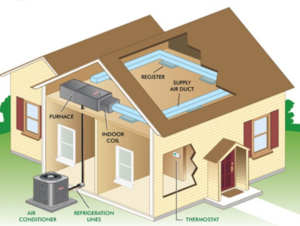JJ&A Mechanical Become Certified (HPCN) Home Performance Contractor Network.
JJ&A Mechanical, a leading provider of Plumbing, HVAC, Heat Pump services in Greater Vancouver Region, and is proud to announce that they have become a member of the Home Performance Contractor Network (HPCN). This exclusive network is made up of contractors who are dedicated to providing high-quality home energy assessments and home performance upgrades.
As a member of the HPCN, JJ&A Mechanical has access to the latest training and resources to help them provide top-notch energy assessments and upgrades. They are now equipped to identify areas of your home where energy is being wasted, and provide solutions to make your home more energy-efficient and comfortable. These upgrades can help you save money on your energy bills and reduce your carbon footprint.
JJ&A Mechanical has always been committed to providing the best possible service to their customers, and becoming a member of the HPCN is just one more way they are demonstrating that commitment. By joining this exclusive network, they are showing their dedication to staying on top of the latest industry trends and technologies, and providing their customers with the most up-to-date information and solutions.
In addition to being a member of the HPCN, JJ&A Mechanical is also a qualified contractor for several utility rebate programs BC Hydro. These rebate programs can help offset the cost of home energy upgrades, making them more affordable for homeowners.
If you are interested in making your home more energy-efficient and comfortable, contact JJ&A Mechanical today to schedule a home energy assessment. Their team of experienced professionals will help you identify areas where energy is being wasted, and provide solutions to make your home more efficient and comfortable. With their commitment to quality and expertise, you can trust JJ&A Mechanical to provide the best possible service for all your HVAC needs and save up to $7000 on your heat pump.
How to become a member of the HPCN?
Becoming a member of the Home Performance Contractor Network (HPCN) can be a great way to demonstrate your commitment to providing high-quality home energy assessments and upgrades. Here are the general steps to becoming a member:
-
Meet the Eligibility Criteria: To be eligible for membership, you must be a licensed contractor with experience in home energy assessments and upgrades. You will also need to provide references and proof of insurance.
-
Complete Training: HPCN members are required to complete training on energy assessments and upgrades. The training will cover topics such as building science, energy modeling, and home performance improvements.
-
Pass a Home Performance Assessment: To become a member, you will need to demonstrate your expertise by performing a home energy assessment and recommending upgrades that meet HPCN standards.
-
Join a Regional Program: HPCN membership is usually managed by a regional program. You will need to join the program in your area and pay any associated fees.
-
Sign a Participation Agreement: As a member, you will need to sign a participation agreement that outlines the expectations and requirements for participating in the network.
-
Maintain Certification: To remain a member of HPCN, you will need to maintain your certification by completing ongoing training and continuing to meet HPCN standards.
Becoming a member of the HPCN can be a great way to demonstrate your commitment to providing high-quality home energy assessments and upgrades. It can also help you stay on top of the latest industry trends and technologies, and provide your customers with the most up-to-date solutions. Contact your local HPCN program to learn more about the specific requirements for becoming a member.










